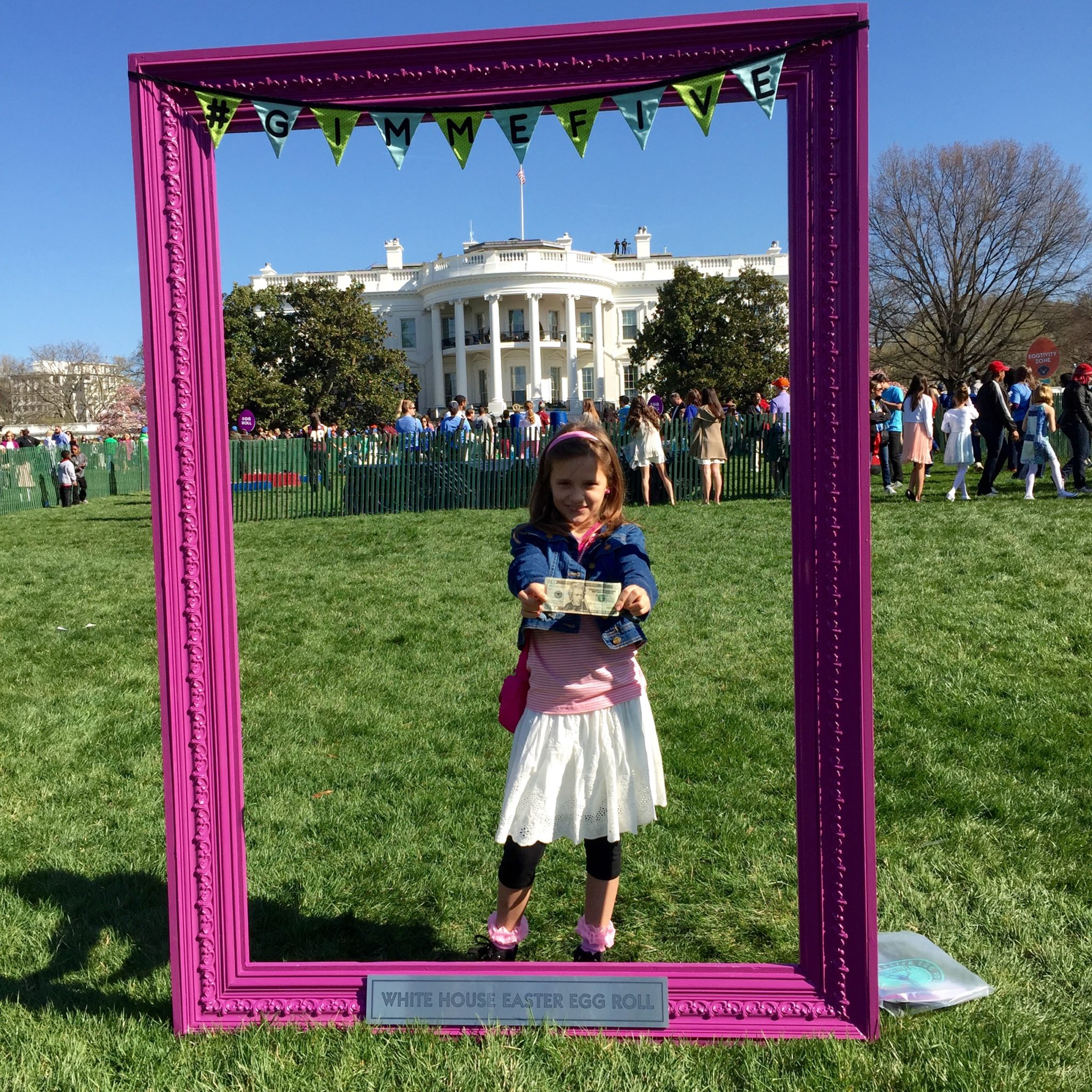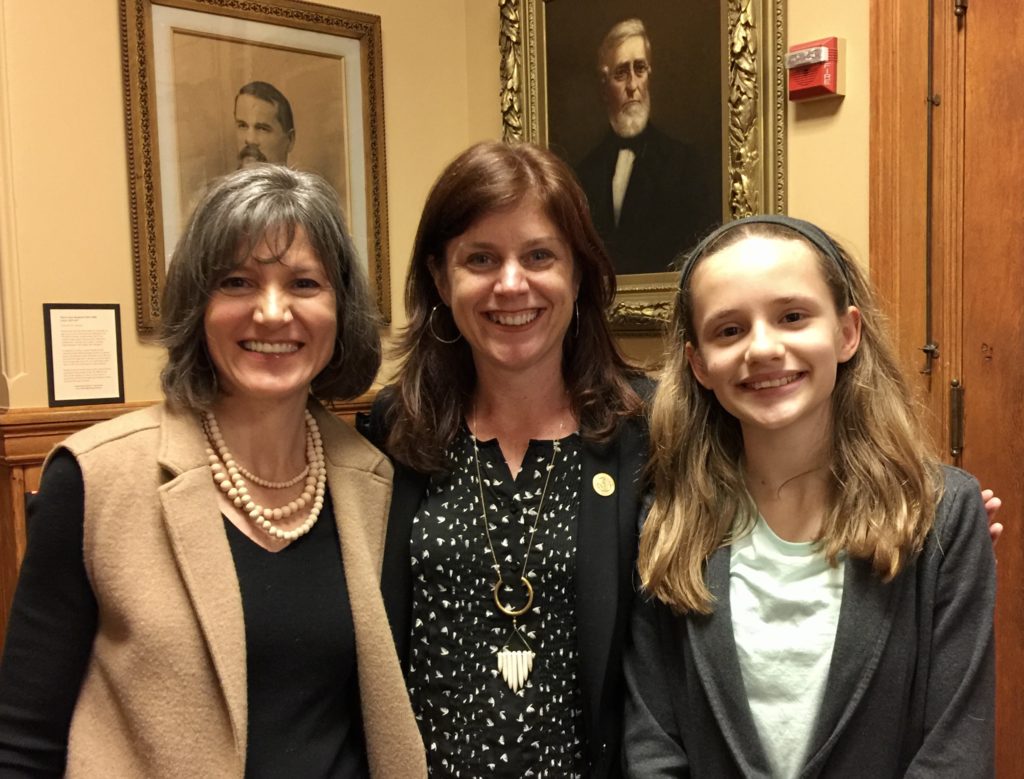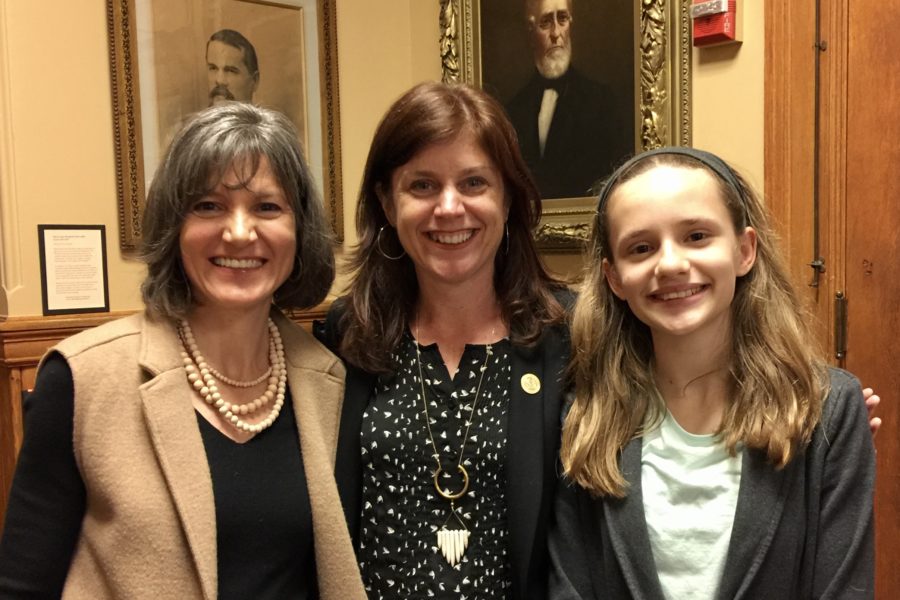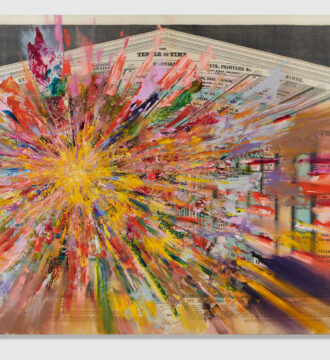
Photo courtesy of Kim Bernstein
Putting her money where her mouth is: Sofia Bernstein at age 9 holding a $20 bill on the White House Lawn in her fight to put women on U.S. currency
One bright school day in 2014, 9-year-old Sofia Bernstein came up to her mother, Kim, and said, “I need to write a letter to the president.” Her query to President Obama, inquiring why there were no women on U.S. currency, moved him so much that he met with her to discuss the issue. On Sofia’s 11th birthday, the administration announced its plans to put Harriet Tubman on the $20 bill. This determined young girl had made real change.
“Fast forward to the Trump administration, and we’ve seen no progress,” says Kim. “The chance of them pursuing this project to put women on currency seems unlikely.” As a result, the dynamic women’s rights duo has turned to a more local issue: public statues.

Photo courtesy of Kim Bernstein
Triple threat: Kim (left) and Sofia (right) with Cambridge City Councilor Alanna Mallon (center) after Sofia’s City Council speech
The Cambridge residents noticed there were next to no public statues of women in their city and, in fact, none representing real historical figures. Sofia gave an impassioned speech to the Cambridge City Council on June 4 and it unanimously voted to erect a new work of public art celebrating Cambridge’s historical women. The City Council partnered with the Cambridge Women’s Heritage Project, an organization in which Kim is also involved, to research potential candidates.
The current plan is to create the artwork in time for the 2020 centennial celebration of the 19th amendment, which granted women the right to vote. Though all of the details, such as the site of the artwork, the subject, the artist, and the funding, are still in process with the city, the Heritage Project has unearthed several promising candidates to be memorialized.
Kim is pulling for Grace A. Johnson, who lived in Cambridge from 1894 until her death in 1952. Johnson was a fiery supporter of women’s suffrage; she was chairwoman of the Massachusetts branch of the National American Woman Suffrage Association and the president of the Cambridge Political Equality Association.
All politics are local. Rather than getting discouraged about politics on a national level, get involved at home. —Kim Bernstein
Kim says education is a crucial part of making change. “The reality is, when we started this process my 9-year-old daughter knew more about historical women than I did,” she says. “I hope there will be an educational component.” One way the Heritage Project might achieve that is by holding a Cambridge-wide vote for the subject of the artwork. They would put forward five or so exceptional women and residents would choose the first historical woman to be honored.
“All politics are local,” Kim says. “Rather than getting discouraged about politics on a national level, get involved at home.”
You can stay up to date on the project by following the Cambridge Women’s Heritage Project on Facebook.



 2 min read
2 min read


